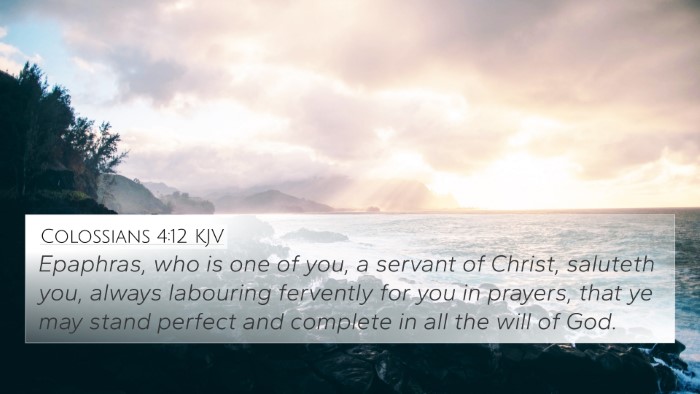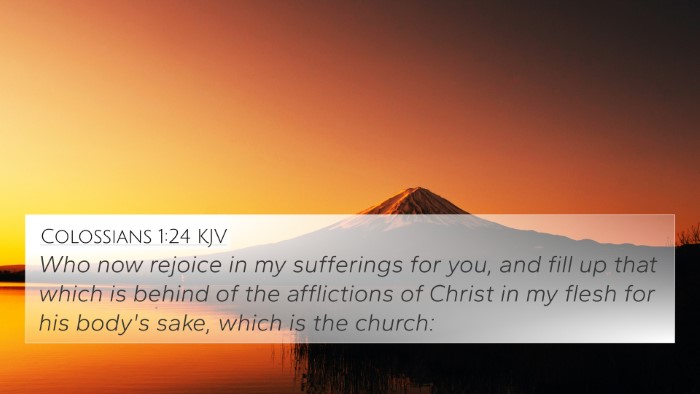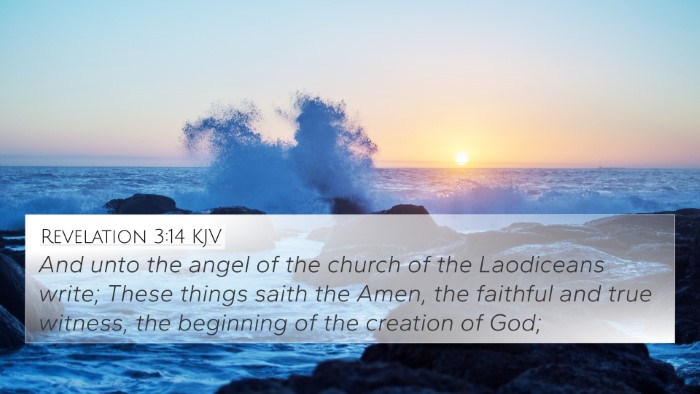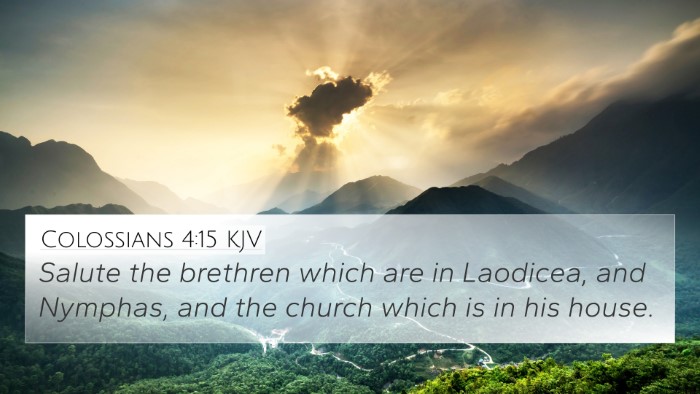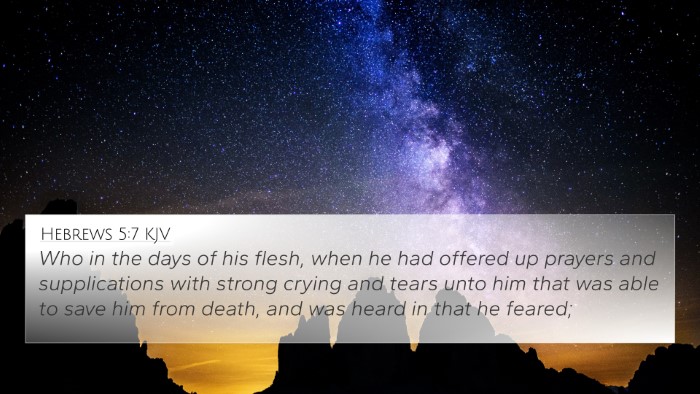Bible Verse Meaning: Colossians 2:1
Colossians 2:1 states: "For I would that ye knew what great conflict I have for you, and for them at Laodicea, and for as many as have not seen my face in the flesh." This verse reflects the Apostle Paul's deep concern and pastoral commitment to the believers in Colossae and Laodicea, showcasing the intense spiritual struggle he endures for their well-being and faith.
Contextual Analysis
The Apostle Paul, while imprisoned, communicates his earnest desire for the spiritual growth of the Christians in these regions. This verse serves as a heartwarming reminder of the care and connection that exists in Christian fellowship, aligning closely with other scriptural themes found throughout the New Testament.
Cross-References
- 2 Corinthians 11:28: Paul mentions the daily burden of the churches, reflecting his enduring conflict for their welfare.
- Philippians 1:7: Highlights his partnership in the gospel, paralleling the communal aspect of spiritual struggles.
- 1 Thessalonians 2:17-18: Expresses his deep longing to see them, echoing the sentiments conveyed in Colossians 2:1.
- Colossians 1:29: Relates to Paul's labor and striving for the maturity of believers, reinforcing his commitment upheld in Colossians 2:1.
- Romans 1:9-10: Paul emphasizes his prayers and desire to visit the believers, connecting to his concern in Colossians.
- Hebrews 13:17: Encourages recognizing and following leaders who are accountable for their flock, akin to Paul's role.
- Acts 20:31: Reflects on Paul's watchfulness and tears for the churches, aligning with the conflict mentioned in Colossians.
Comparative Bible Verse Analysis
The conflict that Paul refers to can be interpreted as both spiritual warfare and the emotional burden he carries. The connections between the verses signal a pattern of responsibility embraced by early church leaders, illustrating the depth of intercessory prayer and pastoral care.
Thematic Bible Verse Connections
Looking beyond just Colossians 2:1, we find that the theme of conflict is prevalent in many of Paul's letters, often relating to his trials and the opposition faced by the Gospel. The idea of standing firm in faith during spiritual battles is woven throughout other scriptures, creating a network of encouragement for believers throughout history.
Tools for Bible Cross-Referencing
Understanding the links between scriptures can enhance one's study of the Bible. Various tools such as a Bible concordance or Bible cross-reference guide can support your exploration. Utilizing these resources allows one to identify connections between Old and New Testament teachings, leading to a richer grasp of biblical narratives and themes.
How to Use Bible Cross-References
When engaging with verses like Colossians 2:1, readers may ask themselves:
- What verses are related to this scripture?
- How do these verses connect to my faith journey?
- In what ways do they reinforce specific themes within the biblical text?
Identifying Connections Between Bible Verses
As you study, seek out opportunities to explore detailed connections. For example, comparing Paul's letters to various congregations provides insights into the consistent challenges faced by the early church, such as external opposition and internal division, all themes resonant in the teachings of Christ and the Apostles.
Conclusion
In summary, Colossians 2:1 not only reveals Paul's personal investment in the faith of others but serves as an invitation to believers to engage deeply with the themes of mutual care, conflict, and pastoral responsibility. It encourages a reflective approach to scripture reading, fostering a community that prays earnestly for each other and grows stronger together in faith.





